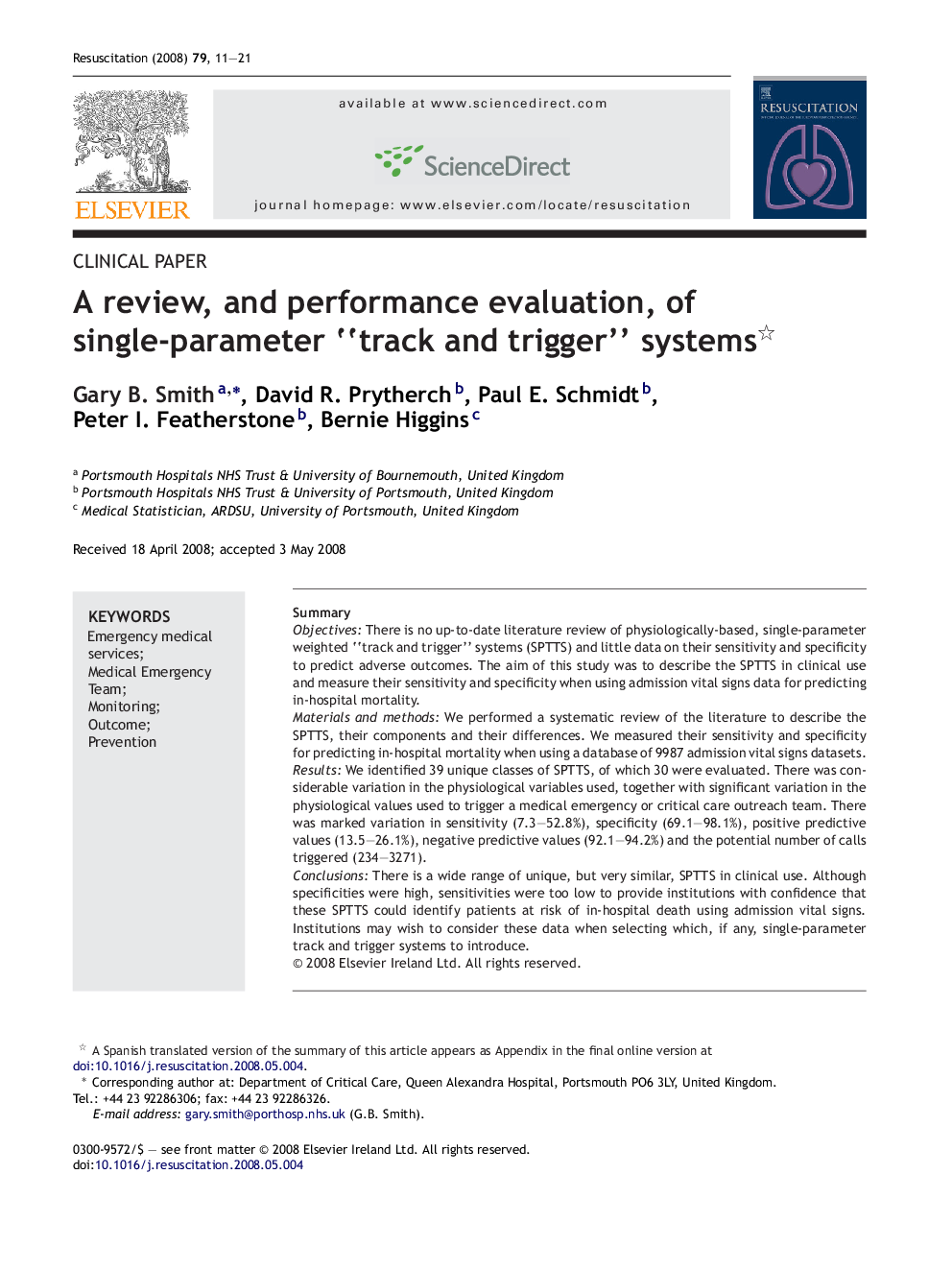| Article ID | Journal | Published Year | Pages | File Type |
|---|---|---|---|---|
| 3009538 | Resuscitation | 2008 | 11 Pages |
SummaryObjectivesThere is no up-to-date literature review of physiologically-based, single-parameter weighted “track and trigger” systems (SPTTS) and little data on their sensitivity and specificity to predict adverse outcomes. The aim of this study was to describe the SPTTS in clinical use and measure their sensitivity and specificity when using admission vital signs data for predicting in-hospital mortality.Materials and methodsWe performed a systematic review of the literature to describe the SPTTS, their components and their differences. We measured their sensitivity and specificity for predicting in-hospital mortality when using a database of 9987 admission vital signs datasets.ResultsWe identified 39 unique classes of SPTTS, of which 30 were evaluated. There was considerable variation in the physiological variables used, together with significant variation in the physiological values used to trigger a medical emergency or critical care outreach team. There was marked variation in sensitivity (7.3–52.8%), specificity (69.1–98.1%), positive predictive values (13.5–26.1%), negative predictive values (92.1–94.2%) and the potential number of calls triggered (234–3271).ConclusionsThere is a wide range of unique, but very similar, SPTTS in clinical use. Although specificities were high, sensitivities were too low to provide institutions with confidence that these SPTTS could identify patients at risk of in-hospital death using admission vital signs. Institutions may wish to consider these data when selecting which, if any, single-parameter track and trigger systems to introduce.
